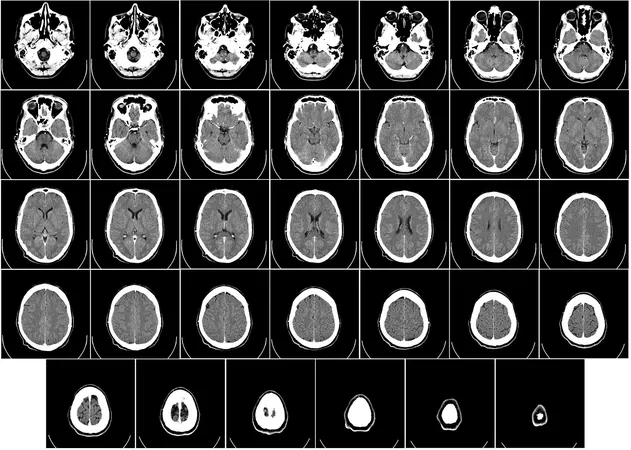
Karolinska University Hospital Leads the Way in 'Extreme Transparency' with AI Integration
2024-11-19
Author: Li
Introduction
In a groundbreaking initiative, Karolinska University Hospital, renowned as one of the world's most transparent hospitals, is utilizing advanced AI technology to promote transparency in patient care. This commitment to openness is reflected in their impressively high survival rates and extremely low complication rates, which are made accessible through publicly available patient outcomes data.
The CRAB Platform
At the heart of this innovative approach lies the CRAB platform—an AI-supported technology that allows the hospital to meticulously track and analyze patient data. By accurately measuring both expected and actual outcomes for a range of procedures, particularly in orthopaedic, multi-trauma, and emergency surgeries, Karolinska has consistently surpassed both national and international benchmarks for patient survival and complication rates. The results of these analyses have boosted Karolinska’s media ranking, solidifying its position among the best hospitals globally.
The Philosophy of Extreme Transparency
Gunnar Sandersjö, head of the hospital’s trauma centre, emphasizes that this “extreme transparency” initiative is more than just a feather in their cap; it serves as a crucial tool for identifying areas needing improvement. "We focus on systemic issues rather than individual blame," Sandersjö explains, outlining the hospital’s approach to enhancing healthcare quality. The hospital aims to uncover and rectify inefficiencies, providing a framework that encourages staff to report problems without fear of repercussions.
Cultural Evolution and Military Influence
This shift towards transparency traces its roots back to a cultural evolution influenced by the military. A senior surgeon, who is also a former Swedish Air Force pilot, brought insight from his military career, where early problem reporting was essential to operational integrity. By adopting CRAB as early as the 2000s, the hospital pioneered an analytical approach that has redefined healthcare quality assessments across Sweden.
Collaborative Approach to Improvement
Under this model, healthcare providers collaborate rather than compete. Each department has dedicated doctors monitoring complication rates, with insights derived from CRAB reports informing their practices. For example, when increases in pressure ulcers or pulmonary embolisms are observed, doctors can trace back to individual patients to analyze their treatment paths and determine the root causes of these complications—be it human error or systemic issues that need addressing.
Focus on Holistic Recovery
This forward-thinking model enhances not only immediate patient care but also provides critical insights into long-term outcomes. Sandersjö highlights the importance of understanding patients' lives post-surgery by exploring their well-being, employment status, and even mental health one year after trauma. "True healthcare improvement goes beyond survival rates; it's about holistic recovery and quality of life," he emphasizes.
Challenges and Future Perspectives
As the model proves successful, there is hope for broader adoption of similar transparent practices across healthcare systems globally. However, Sandersjö notes the challenges of demonstrating transparency in environments where poor performance can lead to institutional shutdowns. "It's vital for hospitals to obtain the permission to ask for help," he insists, underscoring the need for a supportive ecosystem that nurtures improvement rather than punishment.
Conclusion
Karolinska's pioneering implementation of AI technology for continuous quality assessment sets a new standard for transparency in healthcare delivery. With a focus on improving patient experiences and outcomes, this hospital is fostering a culture of learning and accountability that could inspire healthcare institutions worldwide to follow suit, ultimately benefiting patients everywhere.



 Brasil (PT)
Brasil (PT)
 Canada (EN)
Canada (EN)
 Chile (ES)
Chile (ES)
 España (ES)
España (ES)
 France (FR)
France (FR)
 Hong Kong (EN)
Hong Kong (EN)
 Italia (IT)
Italia (IT)
 日本 (JA)
日本 (JA)
 Magyarország (HU)
Magyarország (HU)
 Norge (NO)
Norge (NO)
 Polska (PL)
Polska (PL)
 Schweiz (DE)
Schweiz (DE)
 Singapore (EN)
Singapore (EN)
 Sverige (SV)
Sverige (SV)
 Suomi (FI)
Suomi (FI)
 Türkiye (TR)
Türkiye (TR)